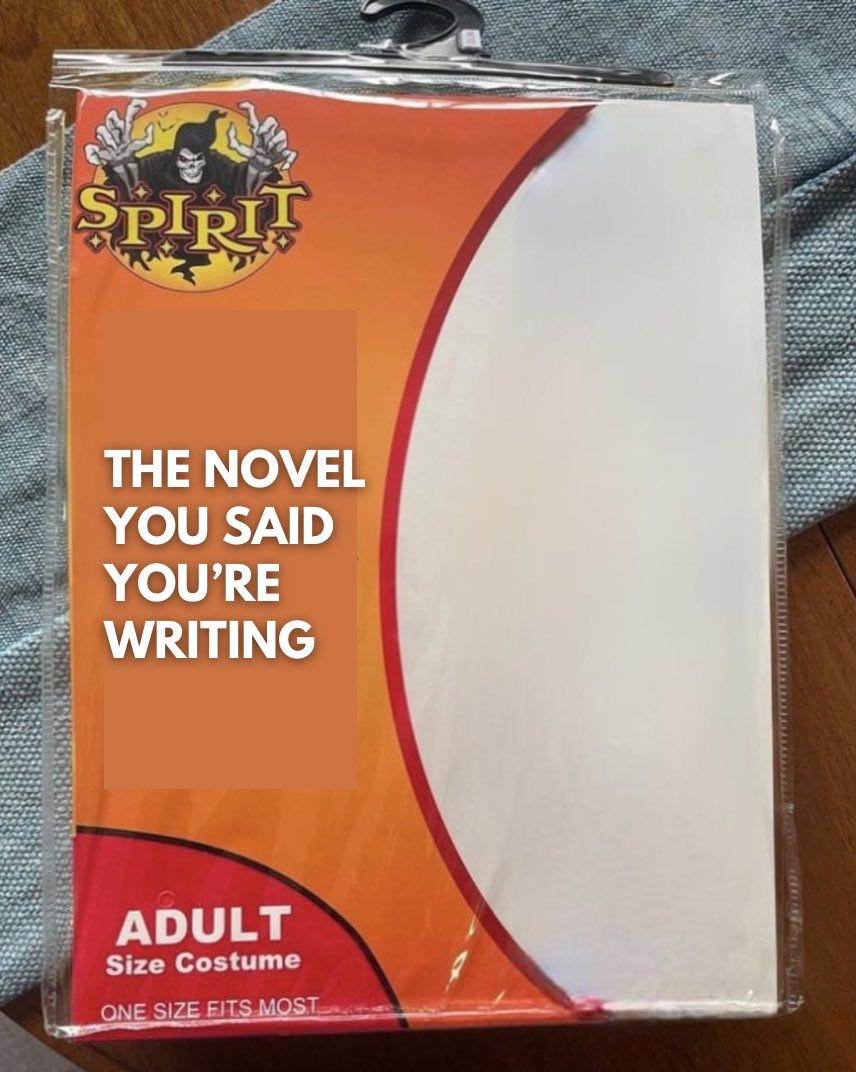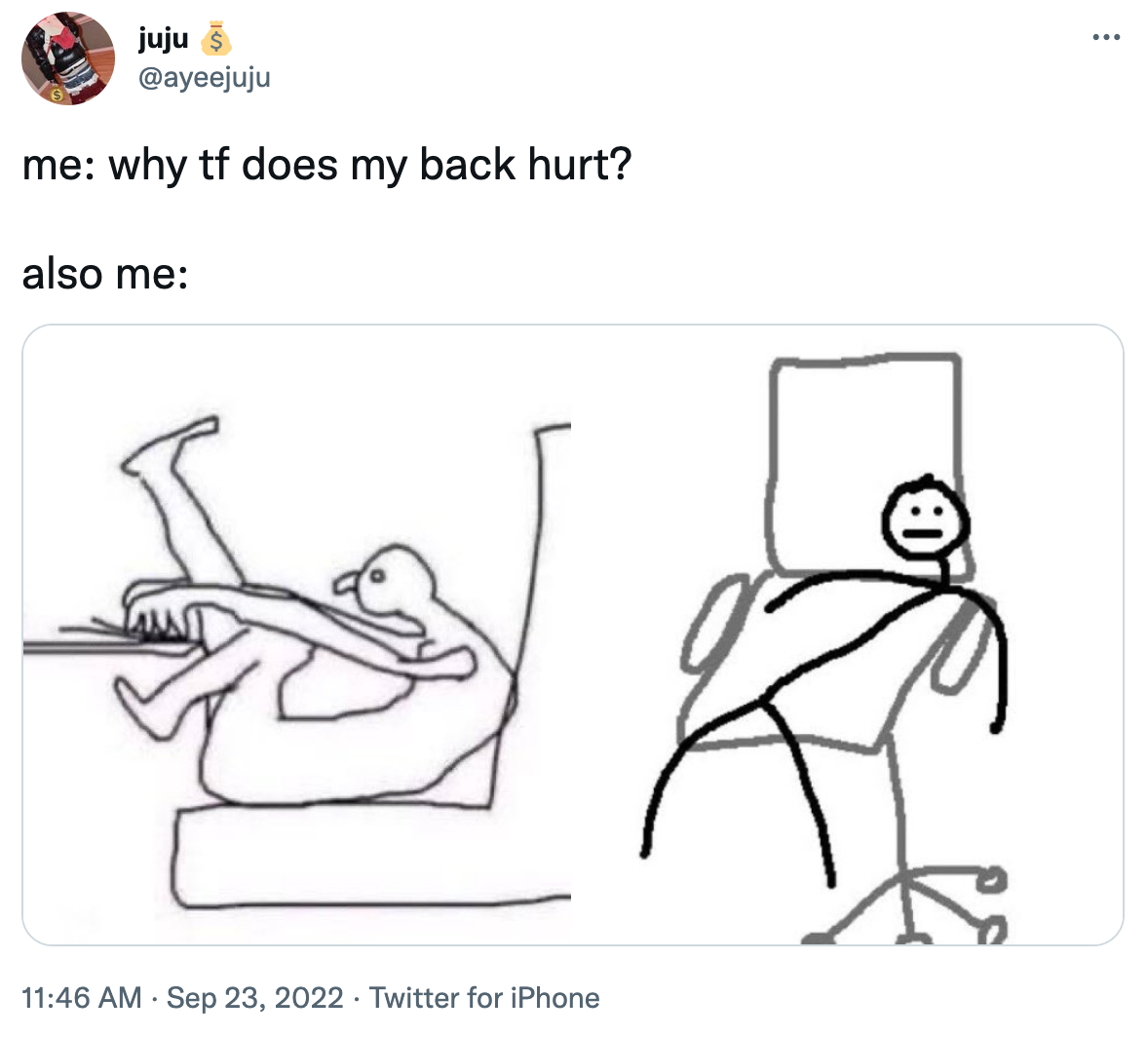Issue 59: The agony of artist statements
I find many aspects of writing painful. Rejection, churning out a terrible first draft, staring down big structural edits, or even coming up with a story title. But I’ve found there is nothing more painful than writing formally about myself and my art. What is my vision as a writer? What is my creative process? What inspires and motivates me?
These are the types of questions that make up an artist statement, a common part of many residency, workshop, and fellowship applications. Although I write this newsletter, which is essentially about myself and my art, it’s not the same as putting together an eloquent, cohesive description of my ~artistic practice~. Also, I can’t simply link to a bunch of memes and call it a day.
Artist statements are daunting. I worry I might be using too many buzzwords or not enough. I want to come across clever and confident, but not too cliche or blowhard. I don’t want to use language that’s too simplistic or too convoluted. I want the words to spring from my forehead, fully formed and eloquent. Above all, I’m afraid of sounding cringe.
But as the wisdom goes, “I am cringe but I am free.” As much as I’d like to explain my creative vision as “just vibes,” I know that isn’t entirely true. I know why I write. When I start a new story, I have an aim. Writing an artist statement, like writing itself, demands earnestness.
The Creative Independent has a great guide on writing an artist statement that helped me reframe how I think about it. Sarah Hotchkiss boils it down to “a not-too-long series of sentences that describe what you make and why you make it.” An artist statement is like any other piece of writing. You can brainstorm, outline, revise, and share it with others for feedback. But it’s also a living document that can change over time.
Rather than trying to write florid sentences that would be better suited to the wall of an art gallery, I went back to the basics. I followed a few of the brainstorming suggestions in the guide:
- I wrote out a list of adjectives that describe my work (I may or may not have Googled “words to describe writing style” in a separate tab…)
- I reviewed all of the stories I’d written, wrote a one sentence synopsis of each, and made a list of their similarities and differences.
- I came up with emotions and reactions I want readers of my work to come away with.
- I set a Pomodoro timer and did a braindump of all the subjects and questions I’m interested in.
- I journaled about why I write.
Last week, The Resort hosted an AMA with author K-Ming Chang. She spoke so fluently not only about her passions and interests, but also their origins. Her obsession with birds came from her grandfather who raised racing pigeons in Taiwan. She grew up in a family where women gossiped, which made gossip her “favorite contradiction in life and in literature.” As a result, her stories often deal with this “double-edged inheritance” and the “agony of being a witness.” I was in awe of how she turned a subject as seemingly simple as “gossip” into such a rich landscape for creative exploration.
“What you write about is inseparable from why you write,” Chang said. Her words stuck with me. I worried less about the uniqueness of my interests and more about being honest with myself. I followed the thread of why I do what I do and arrived at a place that perhaps wasn’t the most articulate, but was more direct and meaningful.
I admittedly still find artist statements difficult because it’s hard to be genuine about your artistic hopes and efforts. It feels presumptuous to make grand-sounding claims about my writing. But isn’t that what all writing is? An act of hope, a statement of value?
In the end, we care about our craft and our impact. So I say, be cringe, be free.


Creative resources
- Vivian Gornick on the struggles of writing and therapy: “I felt the distance widening between the simplicity of my rhetoric and the entanglement of my emotional will.”
- The Creative Independent’s guide on “how to write an artist statement” by Sarah Hotchkiss
- David McDannald compiled this helpful list of lit mags that accept long prose.
- Check out Mason Currey’s three-part #blocktober series: what are creative blocks, the perfect conditions for creating them, and potential solutions.
- “The body is essential to writing because it is where sensing lives. And I can’t write when I don’t want to feel.” — a beautiful essay by Katie Okamoto on omamori, good-luck charms, and returning to writing
Recent reads & other media
I read Happy For You by Claire Stanford, which follows Evelyn Kominsky Kumamoto as she takes a job as a happiness researcher at a tech company and contemplates marriage and motherhood. Last year, E and I decided to read horror fiction in October, starting with Misery by Stephen King. Our pick this year was Mary Shelley’s Frankenstein, which is an absolute banger. It’s the original science fiction novel (inspired by real experiments at the time), discussing science vs. nature and the dangerous pursuit of knowledge, yet always returning to the core human need for connection. I’m also now one of those people who gets vehemently annoyed when people refer to the monster as Frankenstein.
Over the Halloween weekend, some friends and I watched Wendell & Wild, a stop-motion movie from Henry Selick (of The Nightmare Before Christmas and Coraline) and Jordan Peele. It’s a really ambitious, weird coming of age movie about conquering your personal demons—and the many uses of hair cream. I don’t know why Netflix isn’t promoting the hell out of this movie but it’s great!
Note: Book links are connected to my Bookshop affiliate page. If you purchase a book from there, you'll be supporting my work and local independent bookstores!
~ meme myself and i ~
Dog portrait on the subway. “There was a pool for skeletons only.” Trying to subtly join in the conversation. A Taylor Swift inspired Halloween costume, Nicole Kidman in the AMC ad, and the sexy green M&M.

